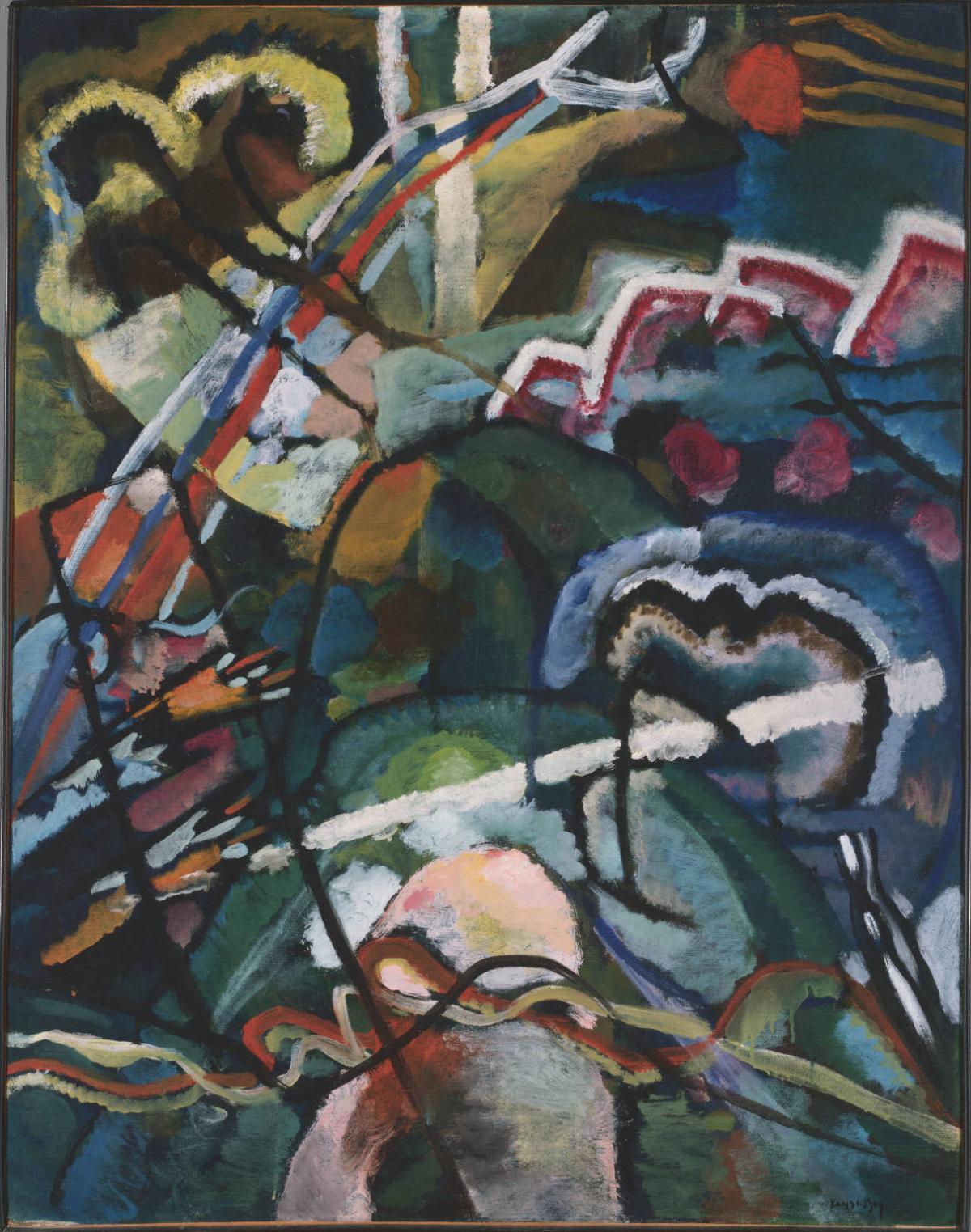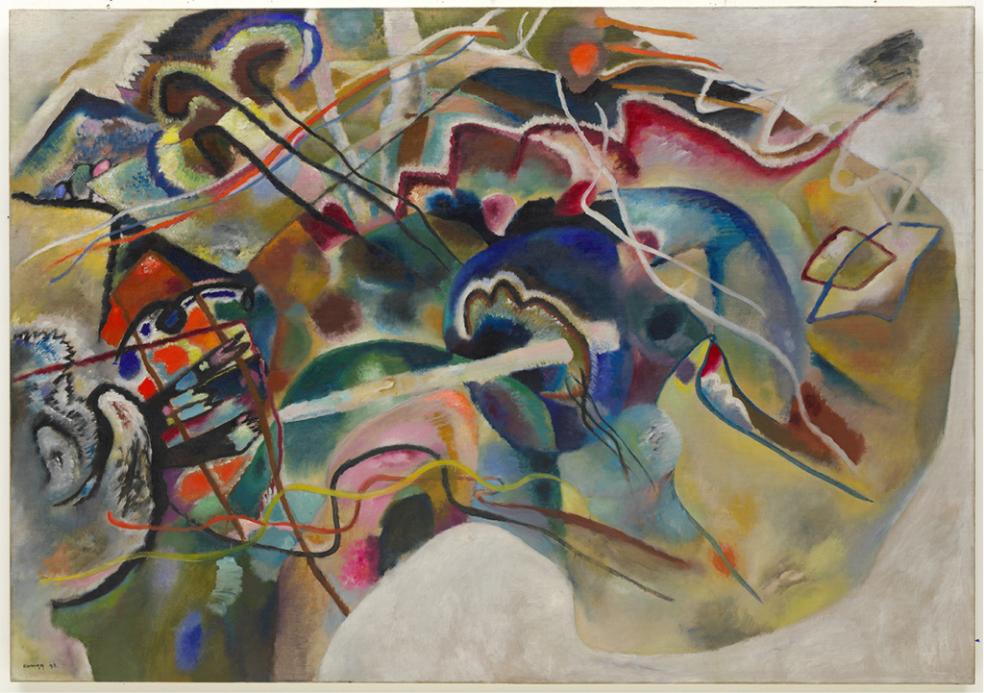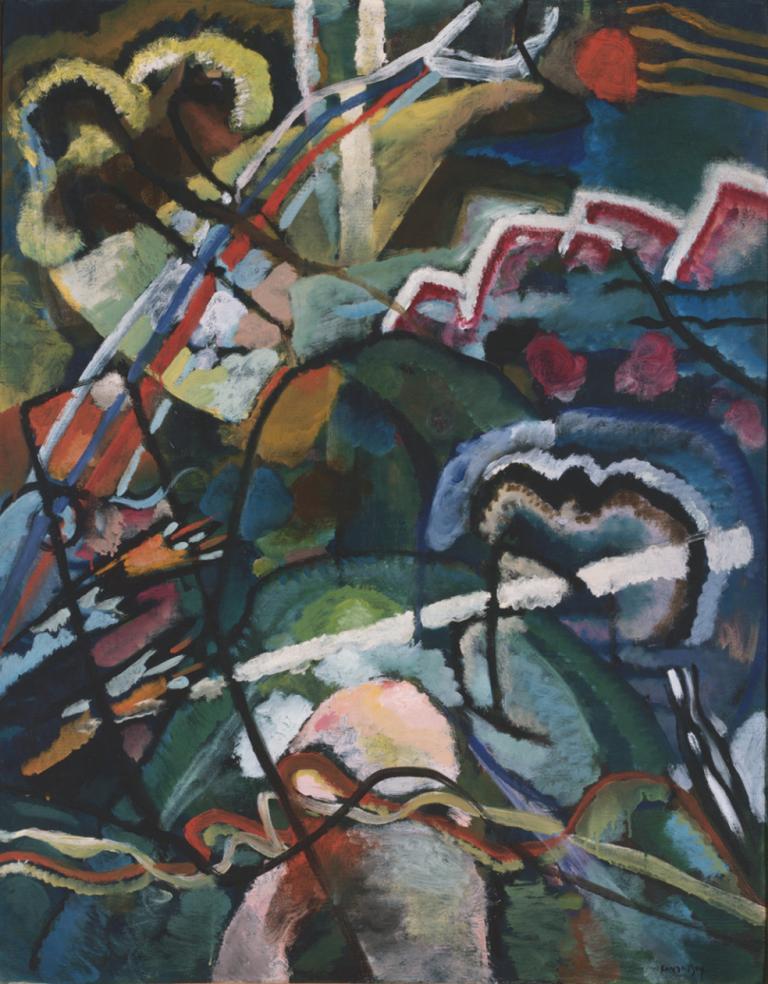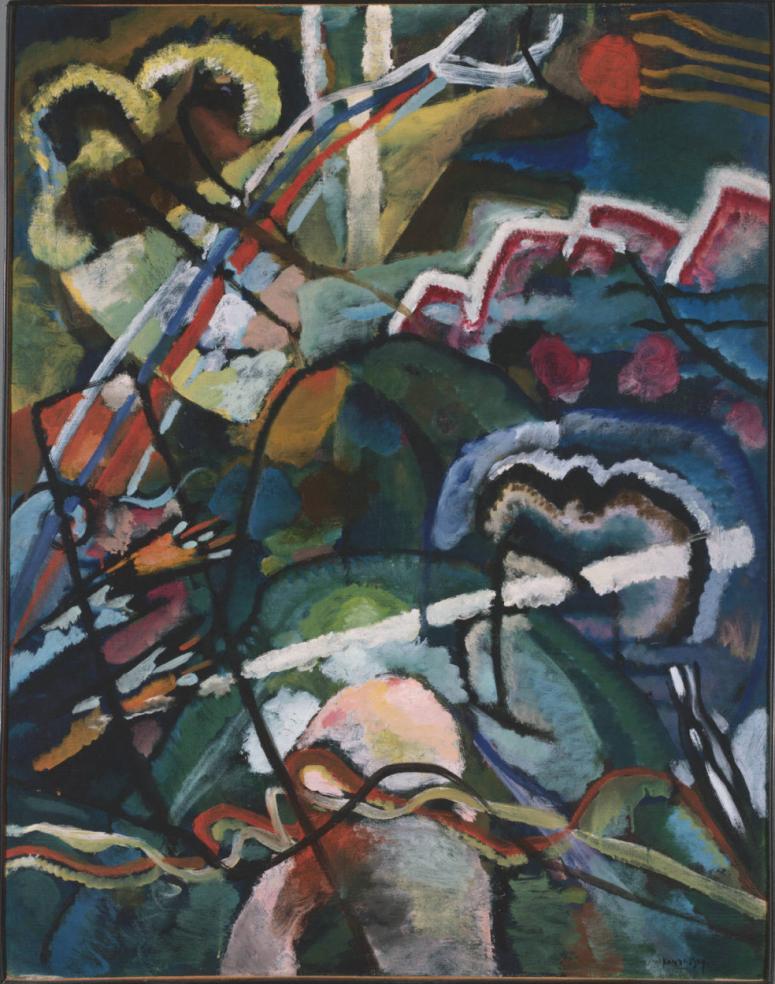Sketch I for Painting with White Border (Moscow)
Wassily Kandinsky ( 1913 )

This oil sketch is an early exploration for work that culminated many years later in Painting with White Border, which is in the collection of the Solomon R. Guggenheim Museum in New York. Although Kandinsky’s usual practice was to begin with preparatory studies, never before had he produced so many studies in anticipation of a final painting.
In seeking to infuse Painting with White Border with the “emotional sounds” of Moscow, Kandinsky turned to two motifs, a troika (a three-horse sled) and St. George, both closely identified with Russia and thereby capable of expressing the profound feelings and sense of place he wished to incorporate into the picture. In so doing, the artist brought together two motifs that had preoccupied him for some time.
In an essay by the artist on Painting with White Border, Kandinsky discussed how he distilled the troika motif (seen in the upper left of the composition) into an arrangement of three parallel lines curved at the top. Seemingly suspended in thin air, the sweeping contours are dynamic evocations of a horse-drawn sled in motion. This three-pronged troika form appears in every preparatory study for the painting.
The three humped lines on the right and the piercing white lance-like form aimed toward bestial creatures on the far left are generally interpreted as a reference to the legend of St. George and the dragon. Like all legends passed down orally over the centuries, the story of St. George varies upon the telling and retelling. A common view holds that a Roman soldier in Asia Minor, beheaded by Emperor Diocletian for his Christian faith, descended to earth to save a princess from a fire-breathing dragon; as a result of his miraculous deed, he converted her and all of Cappadocia to Christianity.
Both of these motifs are present in the early sketch owned by The Phillips Collection, although the final painting in the series is horizontal and floats within that famous white border. Interestingly, during conservation efforts, researchers discovered that Sketch I was painted over another work—a picture by his partner at the time, Gabriele Münter.


